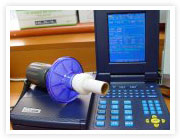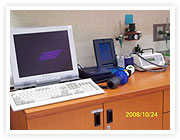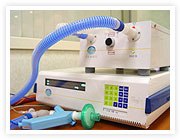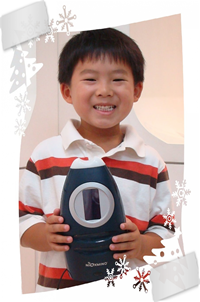Chuang Gung Medical Foundation, Division of Pediatric Allergy, Asthma and Rheumatology - UNREGISTERED VERSION
Main menu
Examination
Examination service
by: Jhong-
Lung function test
We provided three kinds of lung function tests for children older than Five Year Old.

Spirometry:
It is a useful indicator for evaluating lung condition. Common indexes include forced vital capacity (FVC), forced expiratory volume in one second (FEV1), FEV1/FVC ratio, and peak expiratory flow (PEF). The FEV1, FEV1/FVC ratio and PEF are more specific for obstructed airways, that is, more specific for asthma.
Exercise tolerance test:
Excercise-


Methacholine challenge test:
This bronchial provocation test is the gold standard for examining a patient’s airway hyperresponsiveness, which is also a typical feature of an asthmatic’s airway.
Exhaled nitric oxide
Exhaled nitric oxide (eNO) is a substance released from the bronchial epithelial cells, and inflammation can result in a high concentration of eNO. By whooping without invasive procedures, we can understand the condition of the airway inflammation in children, and it helps in the diagnosis of asthma or the monitoring of asthma severity. For children with asthmatic medication, eNO also serves as a marker of drug response.


Autologous serum skin test
There are a number of patients with chronic urticaria but without specific etiology. Of these patients, up to 60 % have autoantibodies for the Fc epsilon R1α subunit. The autologous serum skin test can be performed to test for these autoantibodies, and the sensitivity and specificity are 70 % and 80 %, respectively.
When performing this examination, certain medication, such as antihistamines, may be withheld for several days preceding the test. A blood sample is taken and tests are performed. A patient’s serum will then be subcutaneously injected back into the patient. Our doctors will interpret the results.
